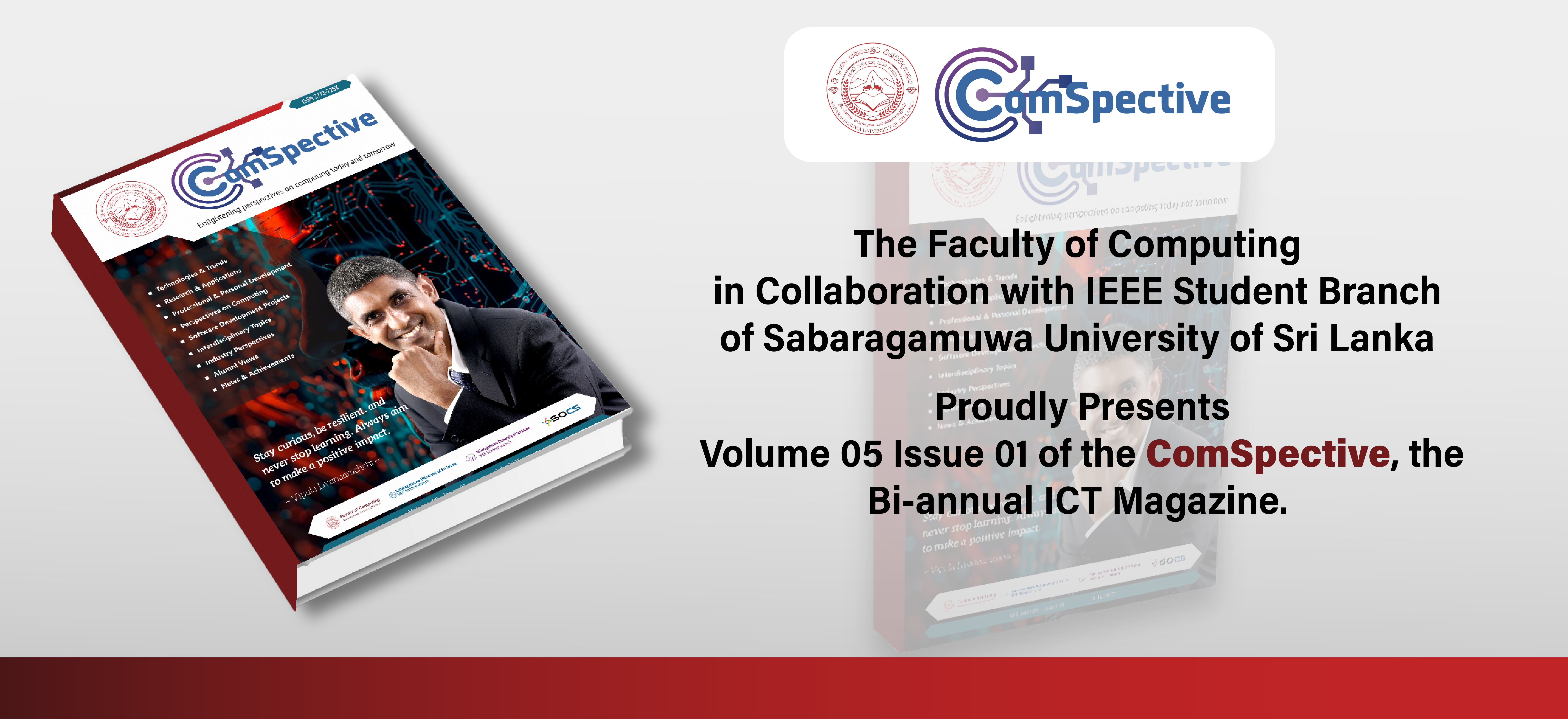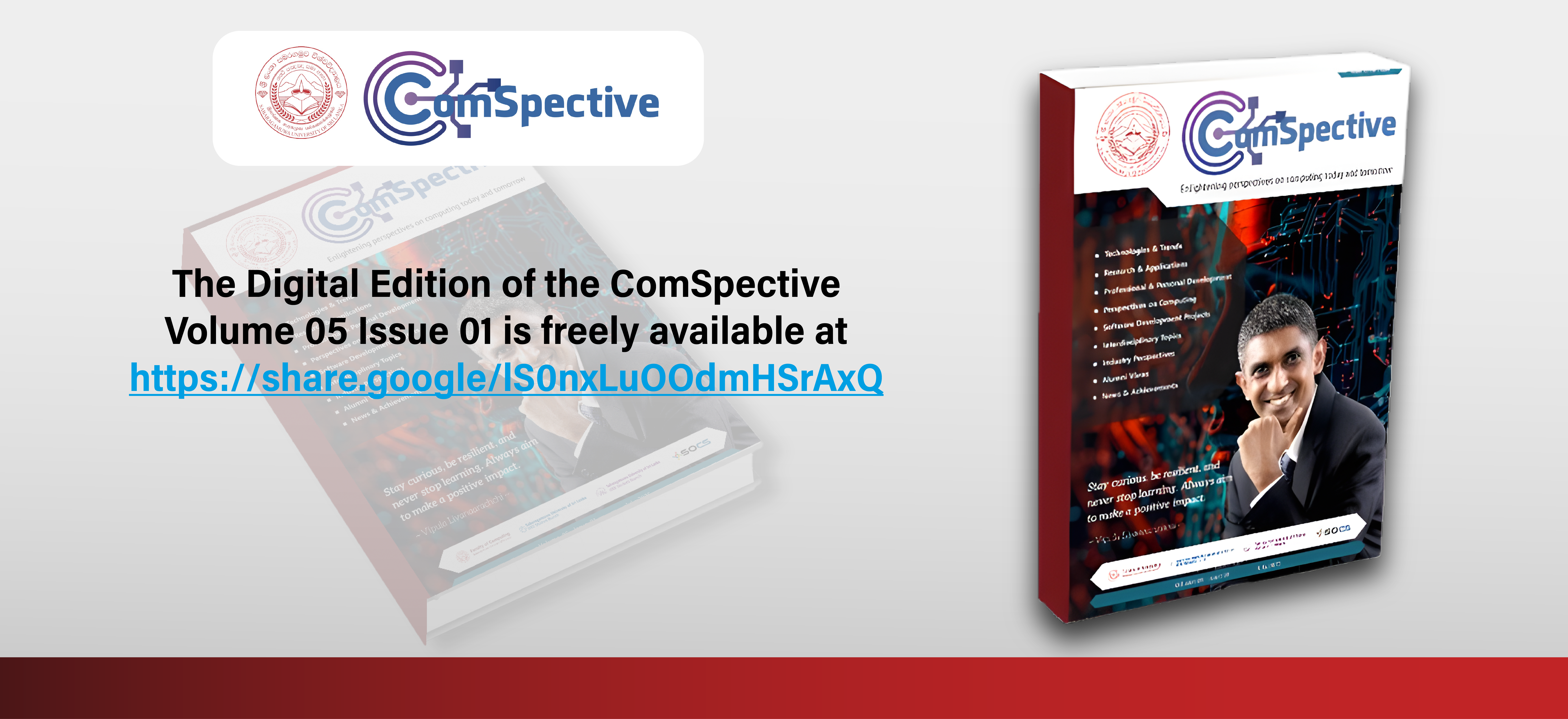ComSpective Bi-annual Magazine


With the aim of exploring today’s world-changing sciences and technologies in the domain of computing, we have taken a step forward to unite with scholars, industry professional, logical thinkers, and problem-solvers through ComSpective the ICT Technical Magazine presented by the Faculty of Computing, Sabaragamuwa University of Sri Lanka. The first issue of the bi-annual Magazine was launched in February 2021 in parallel to the 25th Anniversary Celebrations of the SUSL. ComSpective provides a brilliant opportunity for individuals who wish to contribute to the knowledge-base through articles on their research investigations, insights, and experiences in the domain of computing. Moreover, the Magazine will certainly encourage students and undergraduates to improve their writing and multimedia-related skills.
For countries to stand out in a technological world where computing expertise is specifically required to thrive with innovations, it is indeed required to have individuals with a coherent education and awareness about novel and updated knowledge. This platform would undoubtedly provide an excellent foundation in inspiring such learning and increasing wisdom.
Scope
The scope of the Magazine will cover the following major areas of computing but will not be limited to:
- Information Systems
- Software Engineering
- Business/IS Alignment
- Knowledge and Data Engineering
- Intelligent Systems
- Multimedia
- Big Data
- Computational Biology
- Human Informatics
- Affective Computing
- Devices and Circuits
- Pervasive Computing
- Networking
- Parallel and Distributed Systems
- Cloud Computing
- Mobile Computing
- Services Computing
- Secure Computing
Beyond the above-mentioned areas within the own discipline of computing, the Magazine encourages articles and contributions on interdisciplinary research, education, and practices in computing. In addition to the articles on technical topics, articles focusing on ethical, sustainable, and responsible approaches, issues, and challenges in computing are also welcomed.
Article Categories
- Technical Articles
- Features
- Profile/ Personality - Based on an interview
- Profile/ Personality - “Tribute” - On a renowned scholar who has made a significant contribution e.g., to the field of computing education in Sri Lanka
- Historical - History/ evolution of a computing theory/ concept/ technology etc.
- News/ Achievements (non-paid in-house + paid promotional)
- Photo Feature
- Editor’s Choice (The best student article)
- Alumni Views
- Industry – Current/ emerging technologies and trends
- Industry - On professional/ personal development
- Entrepreneurship/ Startup
- Software development projects (Student articles)